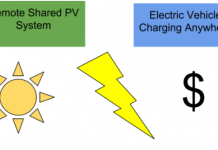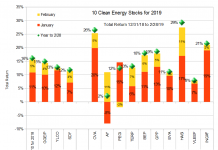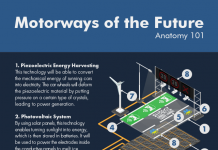John Petersen
In a November 2008 thematic report, The Sixth Revolution: The coming of Cleantech, Merrill Lynch strategist Steven Milunovich identified cleantech as the sixth technological revolution. He borrowed his definition from Lux Research which describes cleantech as “the universe of innovative technologies designed to optimize the use of natural resources and reduce environmental impact” and warned that “investors must pay attention because cleantech could revolutionize much of the economy, including the utility, oil and gas and auto industries.”
The six technological revolutions Milunovich identified were:
| 1771 | The Industrial Revolution | Britain |
| 1829 | Age of Steam and Railways | Britain spreading to Europe and U.S. |
| 1875 | Age of Steel, Electricity and Heavy Engineering | U.S. and Germany |
| 1908 | Age of Oil, the Automobile and Mass Production | U.S. and Germany spreading to Europe |
| 1971 | Age of Information and Telecommunications | U.S. spreading to Europe and Asia |
| 2004 | Age of Cleantech and Biotech | U.S. and Europe going global |
The new technology classes he identified as critical to the cleantech revolution include:
- Renewable energy led by solar, wind, and biofuels;
- Energy efficiency;
- Energy storage;
- Electric vehicles;
- Nano materials; and
- Synthetic biology.
The fundamental drivers he identified include:
- Increasing global CO2 emissions that may contribute to global warming;
- Rapid industrialization in the developing world that will strain global production capacity for everything; and
- Practical peak oil, which I prefer to think of as peak cheap oil.
Quoting Carlota Perez, Milunovich also noted that “Two or three decades of turbulent adaptation and assimilation elapse, from the moment when the set of new technologies make their first impact to the beginning of a ‘golden age’ or ‘era of good feeling’ based on them.” With due respect for the lessons of history, I believe the cleantech revolution will be very different from anything humanity has ever experienced.
Because of my father’s diverse business interests I learned about computer leasing and pre-stressed concrete building systems in the mid-60s. I also worked in electronic circuit board and plastic products factories in the late-60s before graduating from high school. When I took computer programming in the mid-70s we used punch cards for data entry and by the late-70s my law school was a beta site for computerized legal research. During my professional career I’ve lived the transition from magnetic card electric typewriters, four-function desktop calculators and late nights at the financial printer proof reading paper regulatory filings to electronic preparation, filing and distribution of almost everything.
In other words, I’ve not only lived through the information and telecommunications technology revolution, I’ve been immersed in the changes as they occurred. As an incorrigible early adopter, I’ve experienced first hand the transitory nature of the latest and greatest new technology. While it’s a simplistic example, I think most in my generation can remember buying some if not all of the following: 45 RPM vinyl, reel-to-reel tape, 8-track tape, cassette tape, digital audio tape, compact disks and MP3. In their respective eras, which were surprisingly short lived in most cases, each of these technologies was the latest and greatest thing until the next greater thing came along. Given all the change I’ve seen over the last 40 years, I have a hard time putting much faith in anyone who believes long-term forecasts of dominant technologies are possible, much less reliable.
My favorite Seeking Alpha contributor is John Mauldin, a big picture macro-economic analyst who’s been remarkably prescient in the 10 years I’ve been following his weekly letter. One of John’s recurring themes is that we’re living in an era when the rate of technological change is accelerating rapidly. As a result, John suggests that humanity is likely to see twice as much change in the next twenty-one years as it did in during the entire 20th century. Based on my experience over the last 40 years, I tend to think that John is probably right, and that anyone who tries to predict the future beyond 2015, or perhaps 2020 at the outside, is delusional. There is simply no way to predict what the disruptive changes will be or when they will occur. After all, if changes were predictable, they wouldn’t be disruptive.
While I believe there are very few certainties, I know that there are 5.5 billion people on this planet who would like a small piece of the lifestyle that 500 million of us have and frequently take for granted. I also know that thanks to the last industrial revolution, about half of the world’s poor know there is something better than mere subsistence. Human nature being what it is, the first response of people who want a better life will be to work for it and the second will be to fight for it. To paraphrase Vinod Khosla, the big challenge of the next century will be finding relevant scale solutions to persistent shortages of water, food, energy and virtually every commodity you can imagine. Any failure to achieve the goal could be catastrophic.
Since I started this blog in the summer of 2008, I’ve built a bit of a reputation as a contrarian who frequently mocks prevailing wisdom and criticizes innovations that others laud as game changers. The reason I do so is simple. First, I steadfastly adhere to the definition of cleantech as “the universe of innovative technologies designed to optimize the use of natural resources and reduce environmental impact.” Second, I steadfastly adhere to the idea that in a world of accelerating change, any forecast that involves a period of more than five or ten years will be wrong. I may not know what the intervening technical change or market force will be, but I know to a certainty that there will be one if not several intervening technical changes or market forces.
I’m an unrepentant critic of plug-in vehicles because they violate both of my core rules. I’ve published calculations that prove plug-in vehicles are suboptimal users of natural resources and suboptimal at reducing environmental impacts. To add insult to injury, none of the reasonable experts are predicting meaningful market penetration in less than ten years, although they invariably predict wonderful developments over 20 to 30 years. Things may turn out exactly the way the experts predict, but given the disastrous natural resource balance and my expe
rience over the last 40 years of rapid technological change, I have to believe future realities will be far different from the parochial and hindsight intensive forecasts we read today.
All the reasons that lead me to believe plug-in vehicles combine immense risk with insignificant reward and are little more than waste masquerading as conservation lead me to support stop-start, mild hybrid and full hybrid solutions. These are technologies that can be widely implemented today and are likely to become standard options over the next five years. They will almost certainly be displaced by something better within 10 to 15 years, but in the interim the companies that supply the components will thrive while the developers of more exotic technologies are losing money as they learn to out-manufacture Japan and Korea. While I’d be reluctant to suggest that any company is doomed to fail, I’d be equally reluctant to assume success too early in the development cycle.
In April of last year, I posted an Instablog that spoke very highly of the GM PUMA, an ultra light EV concept based on technology originally developed for the Segway. My view was that while using batteries to move one or two passengers and 3,000 pounds of vehicle at highway speeds was irrational, but using batteries to move one or two passengers and a few hundred pounds of vehicle at city transit speeds could be a winner. Just this week I ran across a story that discussed a new joint venture where GM and Shangai Automotive Industry Corp. plan to build a gussied up version of the PUMA called the EN-V for use in congested mega-cities.

I thought it was a good idea a year ago and still do. More importantly it’s an outstanding example of the kind of outside the box user oriented thinking that will be required in an increasingly resource constrained world.
Every industrial revolution in history has been driven by innovations that have proven their ability to do more valuable work with lower inputs of raw materials, capital and labor. Despite lofty aspirations, consumers are far more motivated by the green in their wallets than the green in their cocktail party conversations. Try as they might, governments are never successful in their efforts to plan economic growth or drive uneconomic technologies into the market. I’ve long advocated the proposition that a business model that does not make sense without government subsidies does not make sense. I’ve also been forced by hard experience to shorten my investment horizons from decades to a few years. While I haven’t yet reached the point in life where I refuse to buy green bananas, I don’t have a great deal of interest in carving a new plantation out of raw jungle.
Disclosure: No companies mentioned.








